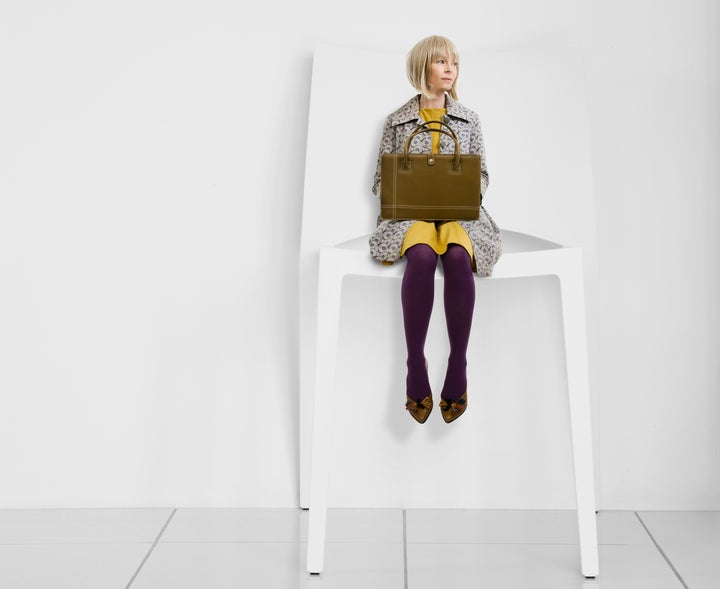
When you are a petite person under 5-foot-3 like me, you realize that a lot of the world is not designed for you. Cabinets can be too high to reach at home, and desks and chairs at work can feel like they are built for a giant. The majority of chairs are designed for the 5th to 95th percentile of the population, meaning people who are at least 5-foot-2-inches tall. This leaves an estimated 4 million workers tense and uncomfortable, with our feet dangling off chairs. Because so many of us spend much of our days sitting, this discomfort can turn into chronic pain.
Hilary Bryan, the San Francisco-based owner and president of The Body at Work Ergonomics, has two decades of experience advising workers on how they can optimize their offices ― something that can hard to do in an environment focused on productivity over physical comfort.
“We’re probably paid for forgetting our bodies,” she said. “It’s a major shift for people to even consider paying attention to their bodies and what feels familiar is not the same as what is functional.”
Here are some tips on how shorter workers can battle nonadjustable desks and too-big chairs to make their spaces work.
1. Sit as if on a horse

The pain comes from sitting poorly.
“What happens when we sit at the computer is that our lower body tends to go really passive,” Bryan said.
This slumped position can set off a chain reaction of pain. Our pelvis tends to go slack when we sit passively, which puts pressure on our spine, which in turn puts extra pressure on our neck.
You want to sit in a way that wakes up the lower body. Bryan advises saddle seating ― positioning a chair high up like you’re on a horse and putting your feet firmly on the ground ― to get this kind of dynamic alignment.
“The idea is to find a range of heights at which you can use the floor as actively as a jockey uses stirrups,” Bryan said. “The open hip angle helps the sit bones to find their safe and dynamic orientation toward the floor, which sets the spine up in its most functional alignment.”
2. Try sitting forward
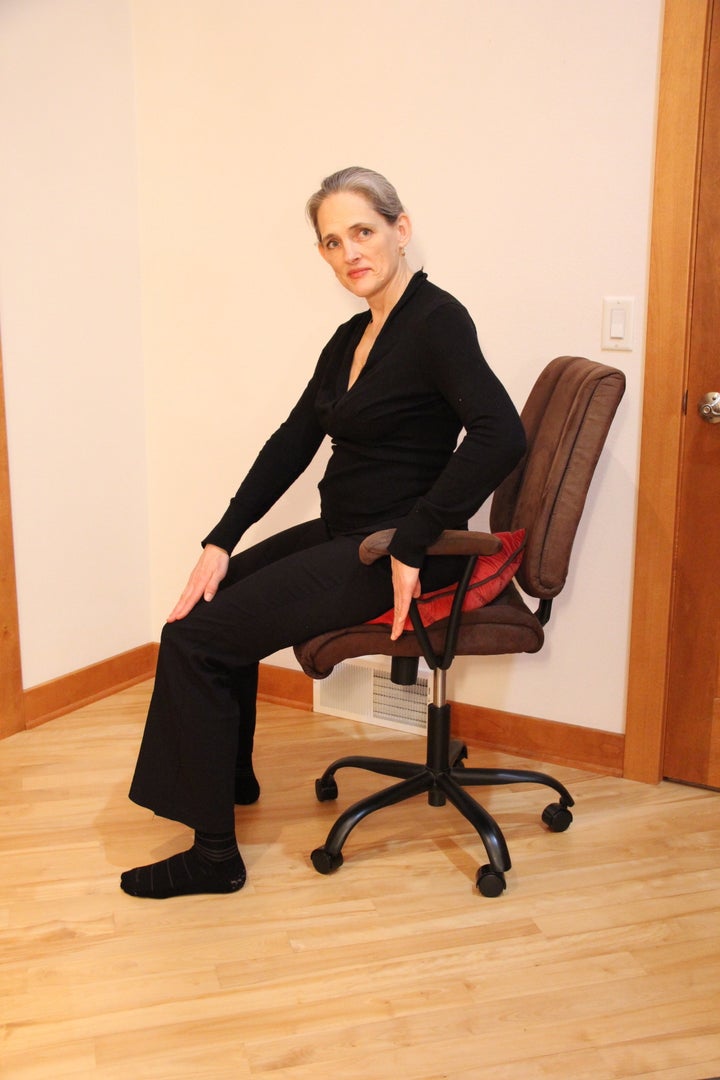
Sitting toward the front of the chair instead of leaning against the backrest can actually be a great hack for petite employees.
You can make that position even more comfortable by getting a roll of tacky grip liner and putting it on the front edge of your chair so your clothes will latch onto it, Bryan said.
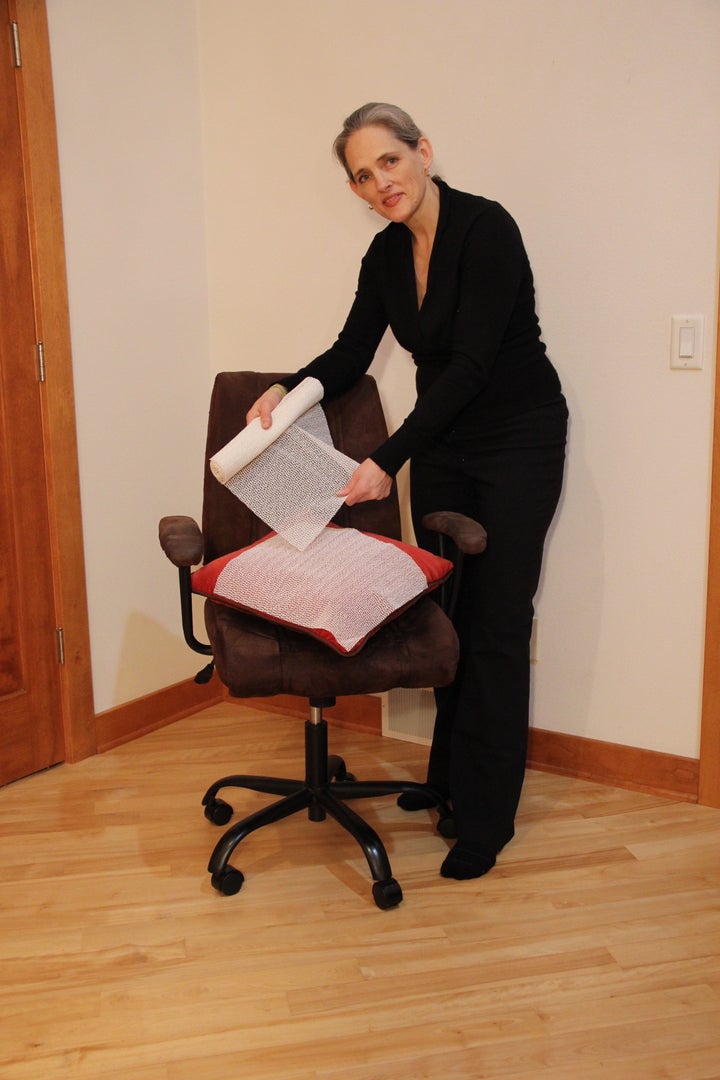
But Ellen Kolber, founder of ErgonomicsNYC with over 17 years of experience, recommended adjusting your seat depth and the height of your chair before resorting to makeshift solutions.
“First, see what you can do with the environment as it is,” Kolber said. “You set the chair up first and adjust everything else to fit the chair.”
3. Don’t force the backrest
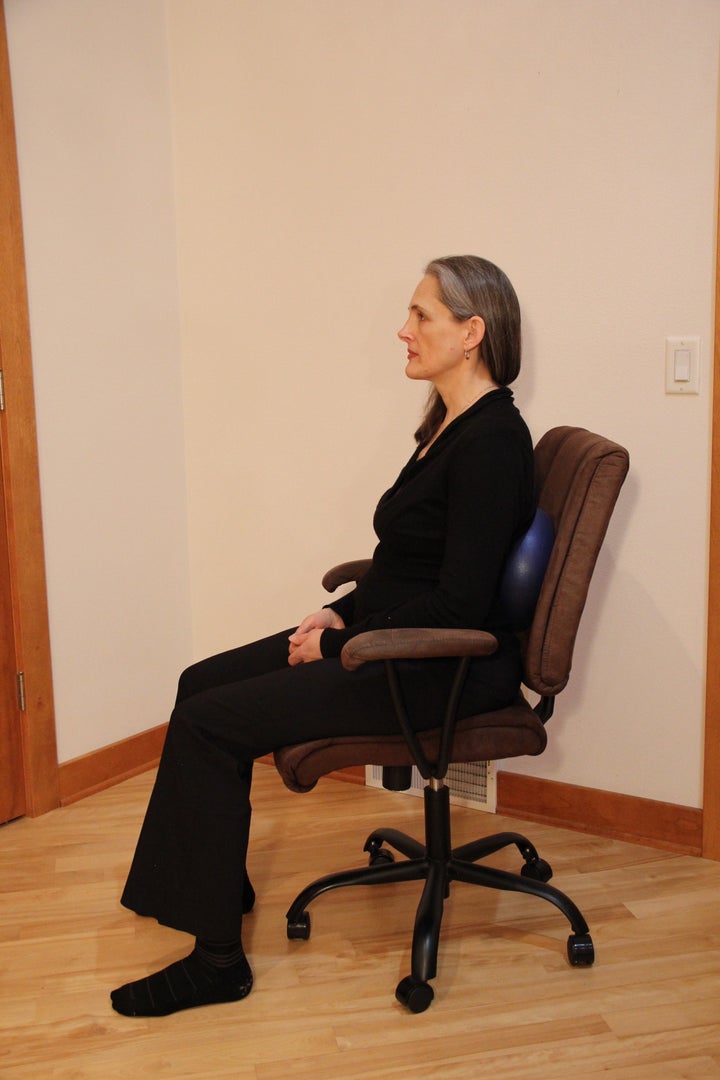
If you want to use the backrest, let it to come to you. Bryan advised against straining yourself to reach it because that will pull you out of alignment.
She said a chair with a narrower seat can help make this easier and can help your spine stack correctly.
If you’re having a hard time reaching the backrest and can’t get a new chair, Bryan said you can place a rolled-up bath towel or a squishy exercise ball between your back and the backrest. Experiment until you find the placement that feels the best.
“The right place is what your body is asking for in the moment,” she said.
4. Get your feet on the ground
The ergonomics experts said it’s important to keep your feet from dangling, which can cut off circulation to the lower extremities. A footrest can help you reduce tension in your upper body if your feet don’t reach the ground.
Alan Hedge, director of Human Factors and Ergonomics Laboratory at Cornell University, said footrests can do more than just provide your feet with a stable surface.
“Some footrests allow rocking of the feet that improves lower leg circulation,” he said.
But even a makeshift solution is better than letting your feet dangle.
“A lot of petite people tuck their feet underneath and use the base of their chair, and I would say, ‘Right on. Your lower body has found a way to be active,’” Bryan said.
To lean into that instinctive motion and make it more comfortable, try adding some grip mat around the base of the chair, so that your feet have something tacky to press into.
Regardless of where you’re resting your feet, posture matters.
“Please do not just prop your legs up as if kicking back on an easy chair, because that will rotate your pelvis back onto your tail,” Bryan said.
5. Relax your eyelids
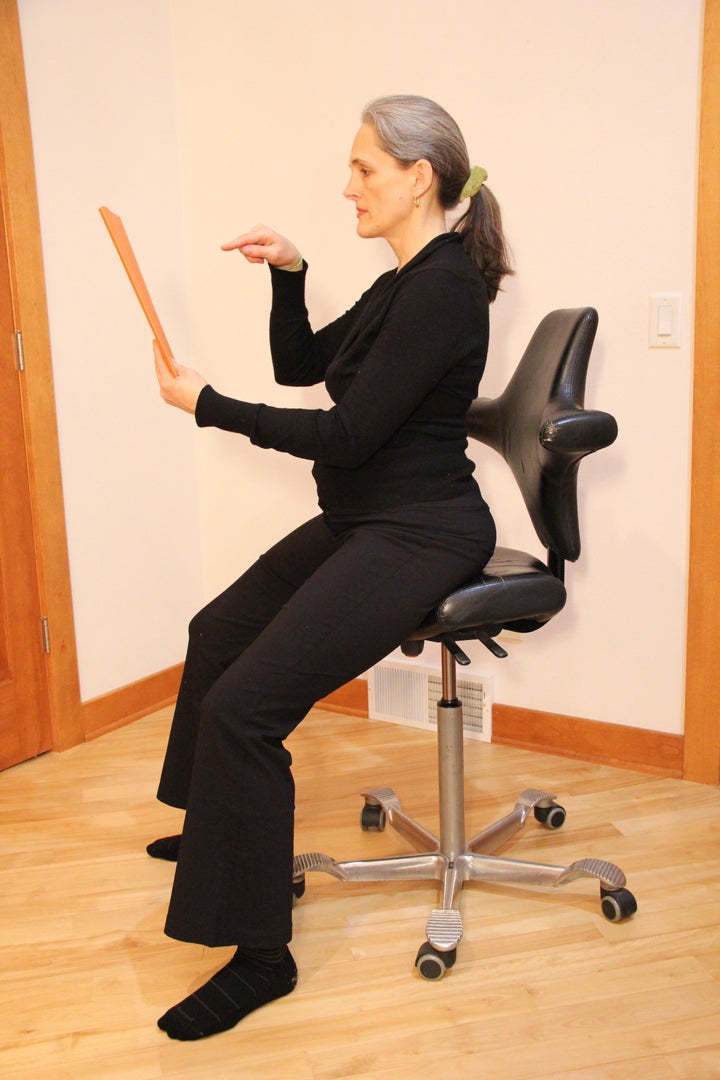
“Eyes do not like to be wide open,” Bryan said. “Your eyelids should get to be relaxed.” To figure what makes your eyelids happy, you need to check in with your body and see what parts are straining to hold its position.
Try holding a piece of a paper up to your face to figure out where is the best distance for you to read that paper. Once you learn what your body wants, use that information to adjust where your computer screen is.
“Notice whether your monitor height aligns with your ideal reading range. Adjust monitor height accordingly,” Bryan said.
Perhaps surprisingly, Kolber said she sometimes asks clients to close their eyes to figure this out.
She tells them to “close their eyes and nod their head up and down as if they are saying yes, and then feeling where their neck feels most balanced over their head and shoulders,” she said. “When they open their eyes, hopefully, that is where their work is going to be.”
6. Forget the armrest
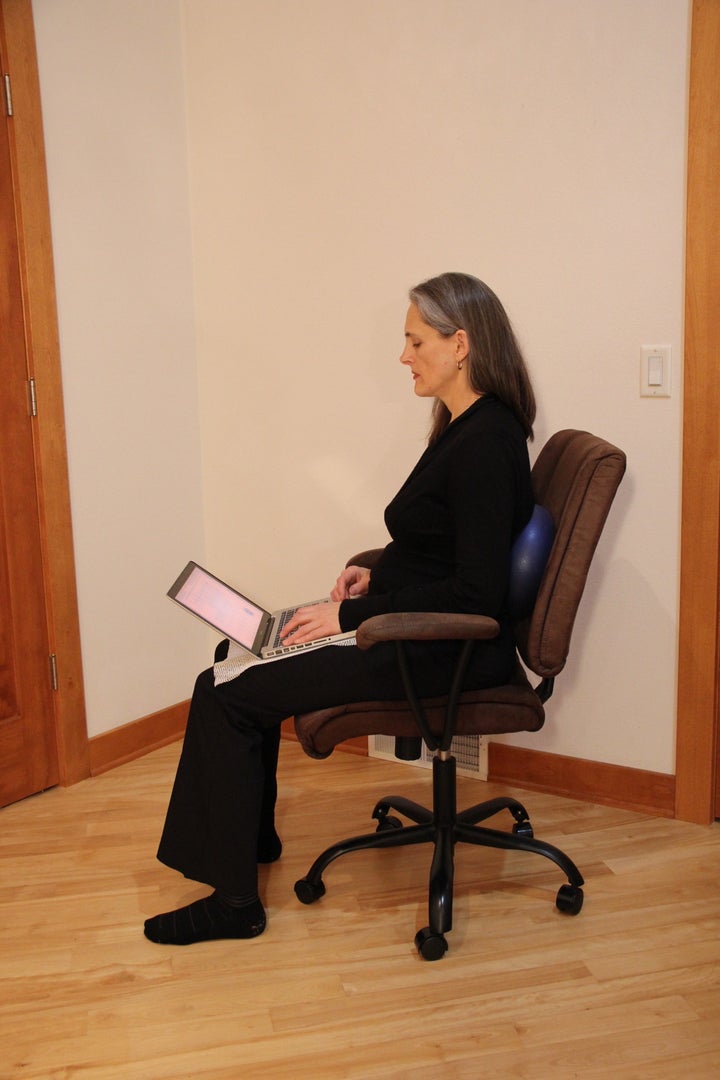
Many armrests are too far apart for a petite person’s body, experts said. And in a lot of cases, they’re completely unnecessary.
“Armrests aren’t essential to typing or mousing but they help with getting into and out of the chair and occasional resting,” Hedge said.
Bryan advised letting your shoulders and hands find their own way instead of contorting your body to fit the armrest.
“You want your shoulders to be dropped, and most people, particularly if they are petite and work at a desk, typically have to raise their shoulders on that desk,” Bryan said.
A keyboard tray can help keep your elbows at a natural height and prevent you from raising your shoulders while working, Kolber said.
7. Don’t let comfort stop you from moving
Each of these hacks can help make your sitting body happier, but always remember to get up and move around. Sitting is our natural enemy. One analysis of 47 articles on sedentary behavior found that sitting on our butts too long can significantly increased our risk of bad health outcomes, regardless of our physical activity.
So once you find your ergonomic setup, rejoice at your good fortune ― and then remind yourself to get up from your chair regularly.
“No position is good longer than 20 minutes,” Bryan said.